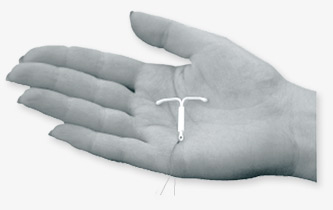
Levonorgestrel Intrauterine System (LNG IUS)
The levonorgestrel intrauterine system (IUS) is a contraceptive method made of plastic, and shaped like the letter “T”, placed inside the uterus. Inside, it contains a synthetic female hormone, levonorgestrel, which is released slowly into the uterus (womb), helping to prevent pregnancy. This hormone acts like the natural hormone progesterone and is widely used in other contraceptive methods, such as implants and oral contraceptive pills.

Brief facts
- Over the first year of use, the pregnancy rate for LNG IUS users is 1 to 3 per 1,000 women, a rate less than 1%
- The LNG IUS is a safe method of contraception, comparable to sterilization
- The LNG IUS provides a lower and steadier dose of hormones than oral contraceptive pills
- The LNG IUS is easily inserted and easily removed
- Fertility returns quickly upon removal of the LNG IUS device
- Use of LNG IUS may help shorten, lighten or even eliminate menstrual bleeding
Product Development
The Levonorgestrel Intrauterine System (LNG IUS) was developed by Population Council and Bayer Oy (formerly Leiras Oy). The LNG IUS is available to the public sector through donations by ICA Foundation.
The development of the LNG IUS began in the late 1970s at the Population Council, with the aim of creating a contraceptive device combining the beneficial features of both oral contraceptives and intrauterine devices. Today clinical data is available for over 13,000 women-years of product use, demonstrating high efficiency and acceptance of the LNG IUS.
Product Description
The LNG IUS is a T-shaped plastic device placed in the uterus that steadily releases small amounts of Levonorgestrel, a progestin hormone, each day. The T-body adjusts the system to the shape of the uterus and the vertical arm of the T-body carries the drug reservoir containing the hormone. Levonorgestrel is the progestin hormone released by the IUS, provided locally in the uterus, with an initial release rate of 20 micrograms per day. The LNG IUS functions by suppressing the growth of the uterine wall, reducing fertility, thickening cervical mucus and inhibiting sperm motility. The LNG IUS provides contraceptive protection for up to 5 years (WHO/JHBSPH 2007) (ARHP 2008) (ICA Foundation 2008).
LNG IUS is used for contraception (prevention of pregnancy). In addition, the LNG IUS helps to reduce iron-deficiency anemia, may reduce menorrhagia (excessive menstrual bleeding) and also may lessen symptoms of menstrual cramps and endometriosis. The LNG IUS does not protect against HIV infection or other sexually transmitted infections.
LNG IUS added in the WHO Essential Medicines List
In 2015 the World health Organization added the LNG IUS to its Essential Medicines List (EML). Countries may in turn add the LNG IUS to their own EMLs following the positive WHO assesment. The WHO added guidance to its Medical Eligibility Criteria to ensure that healthcare providers understand the method and have the appropriate knowledge to counsel clients about its adoption and use.
